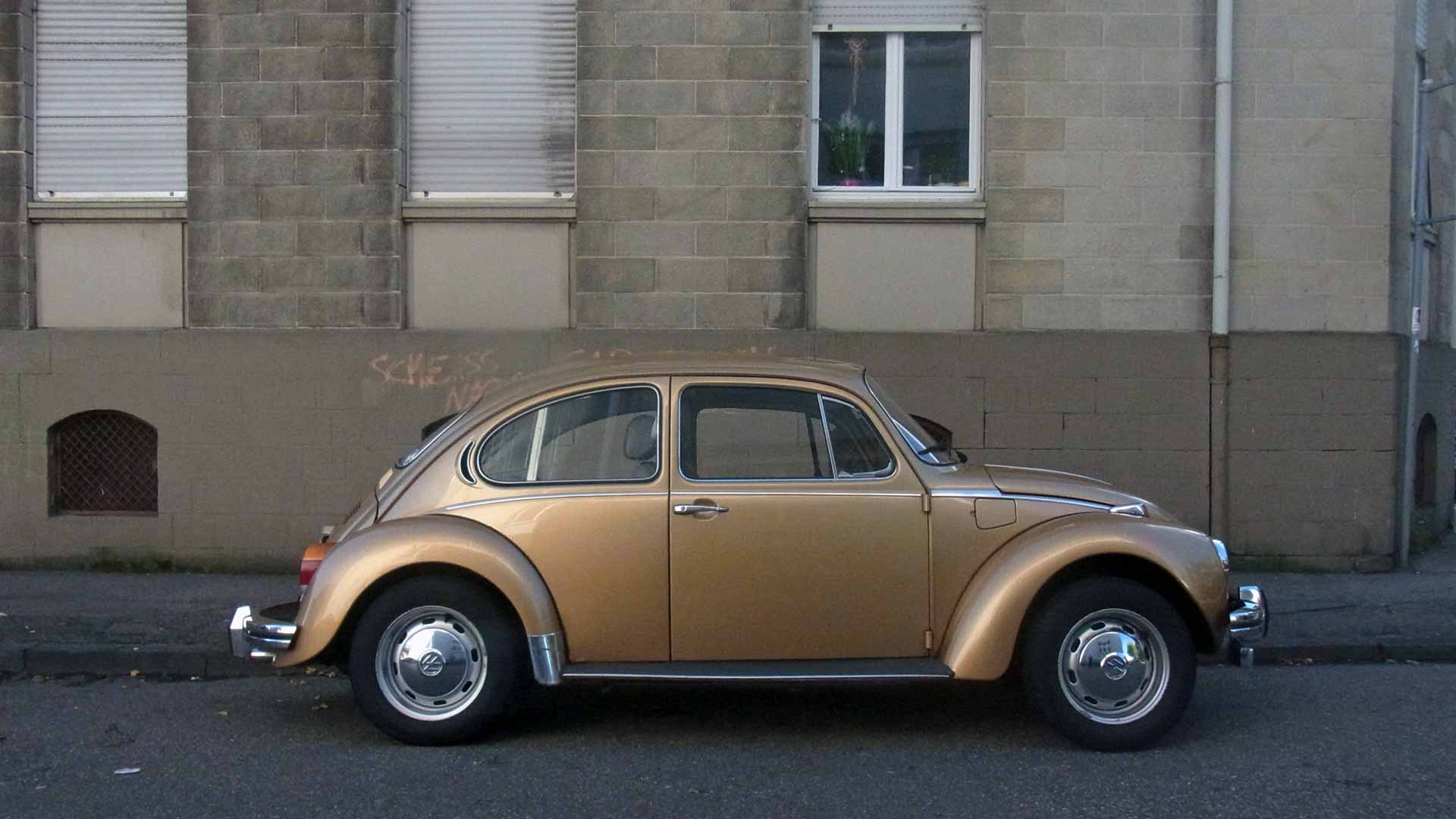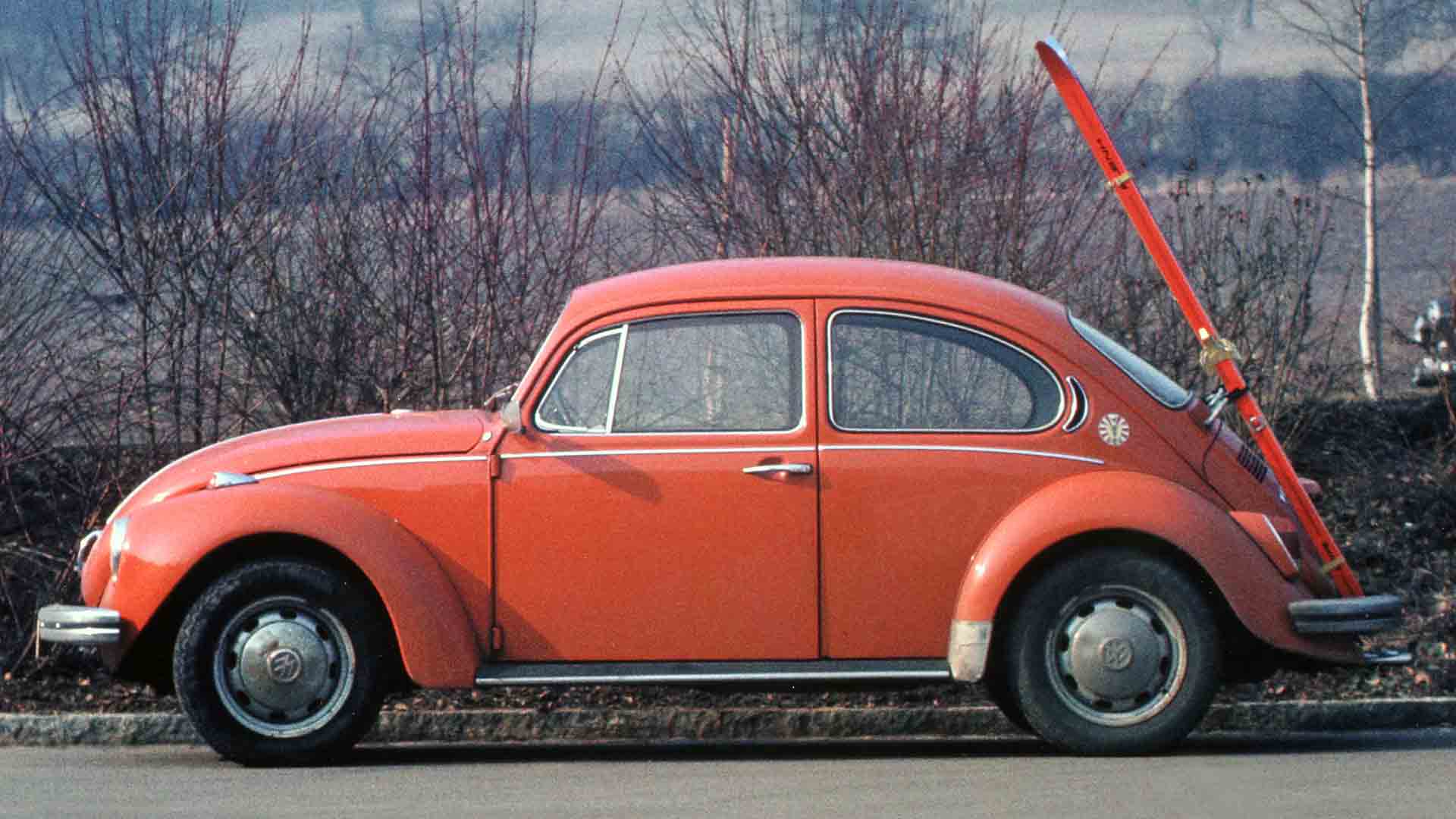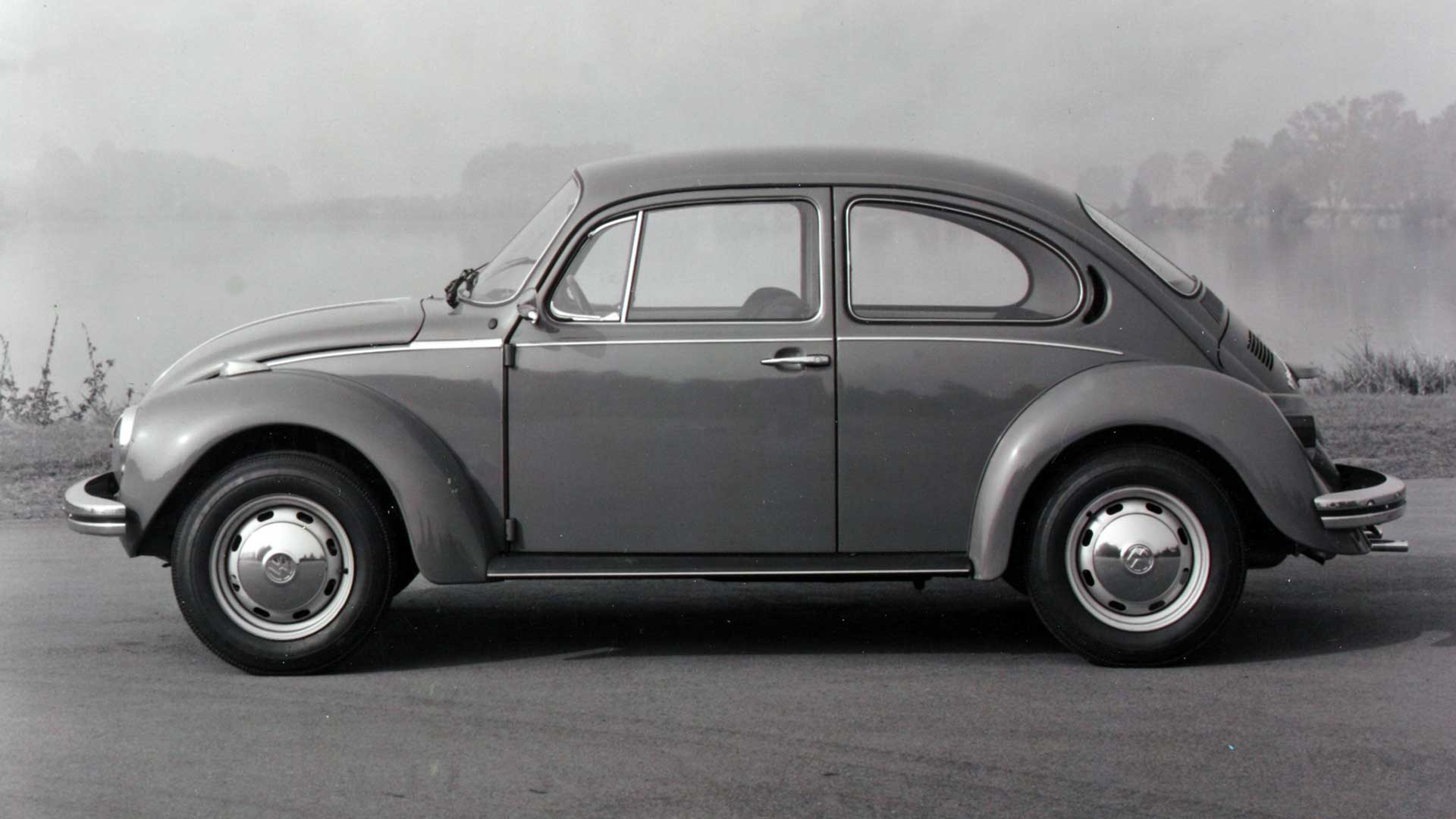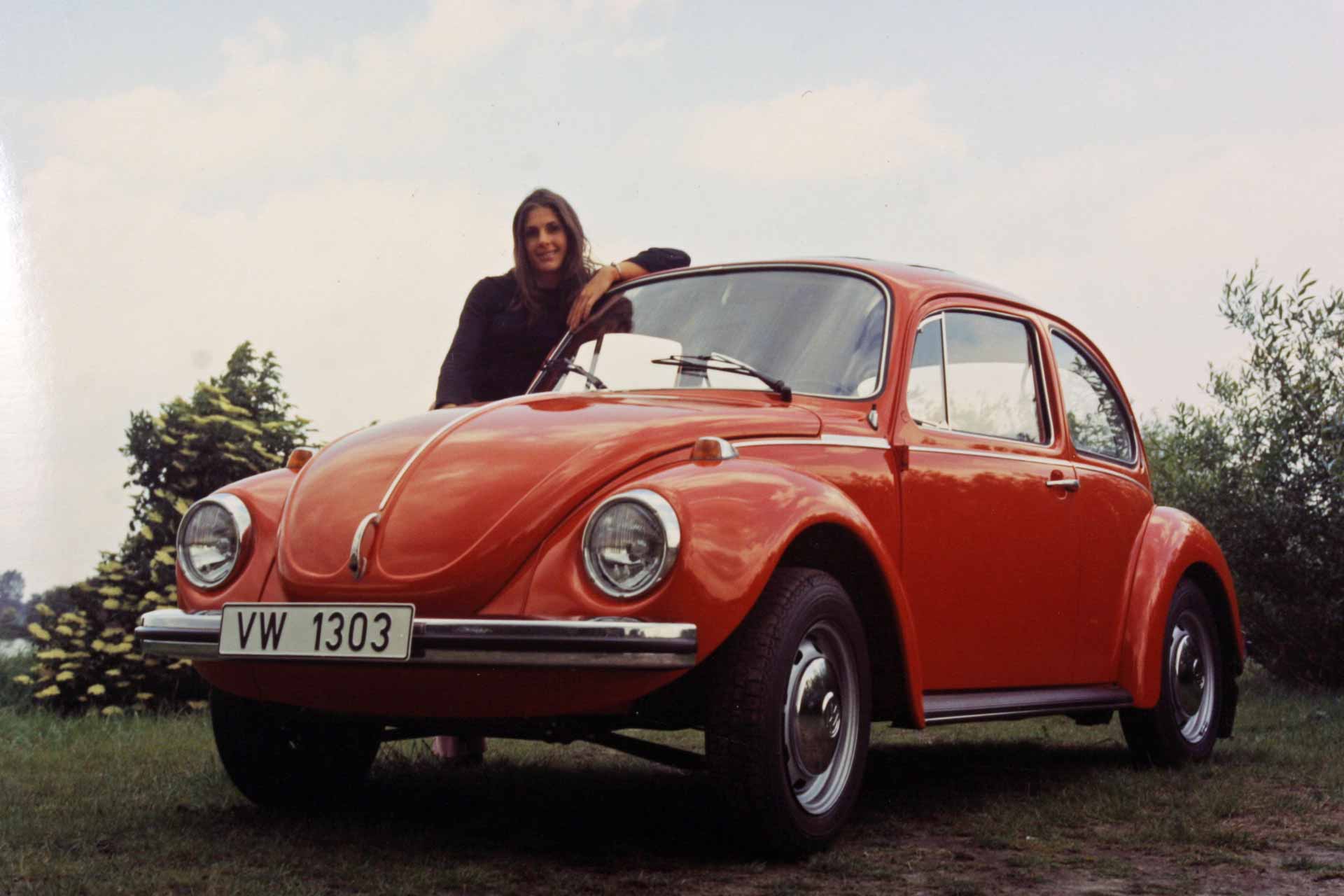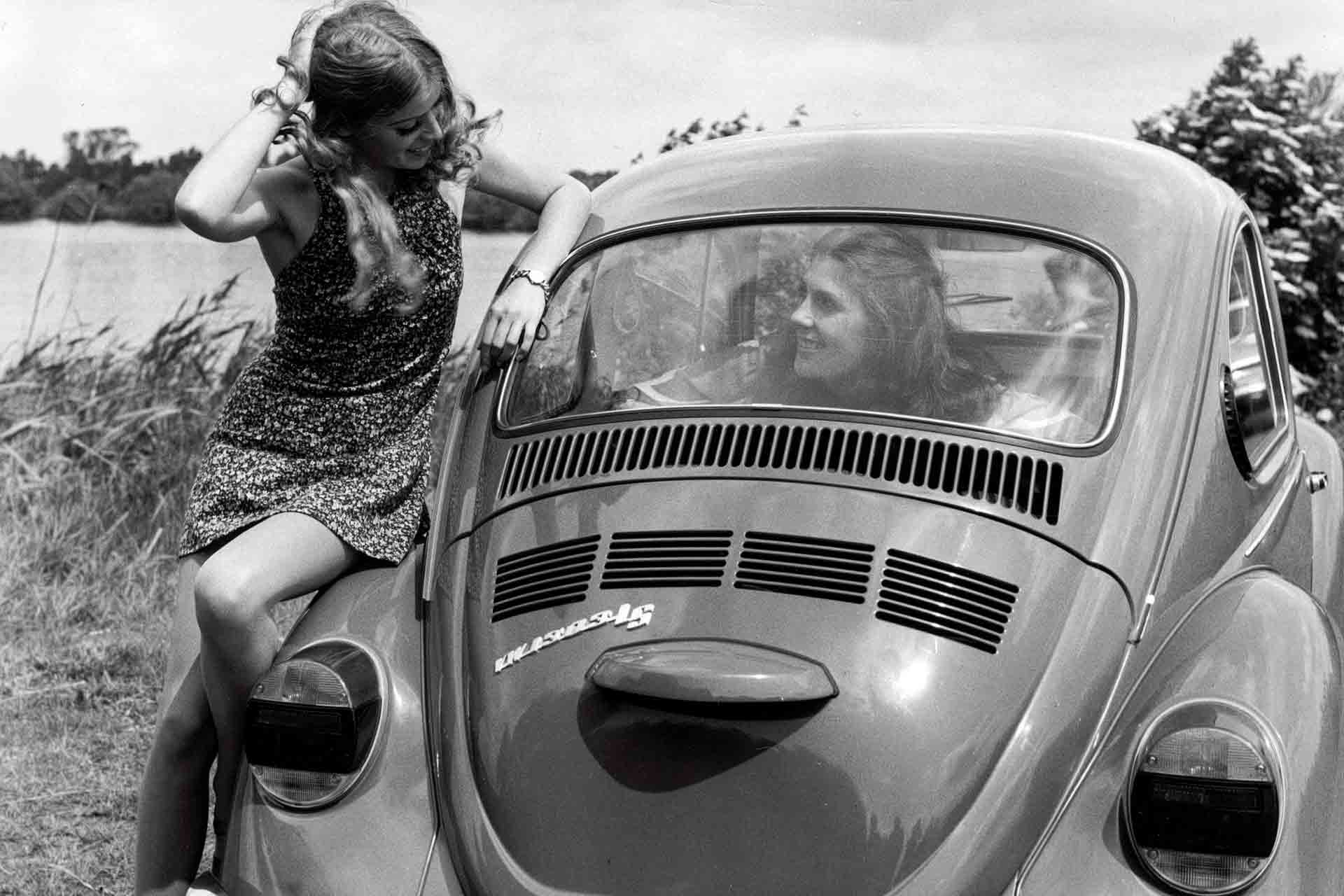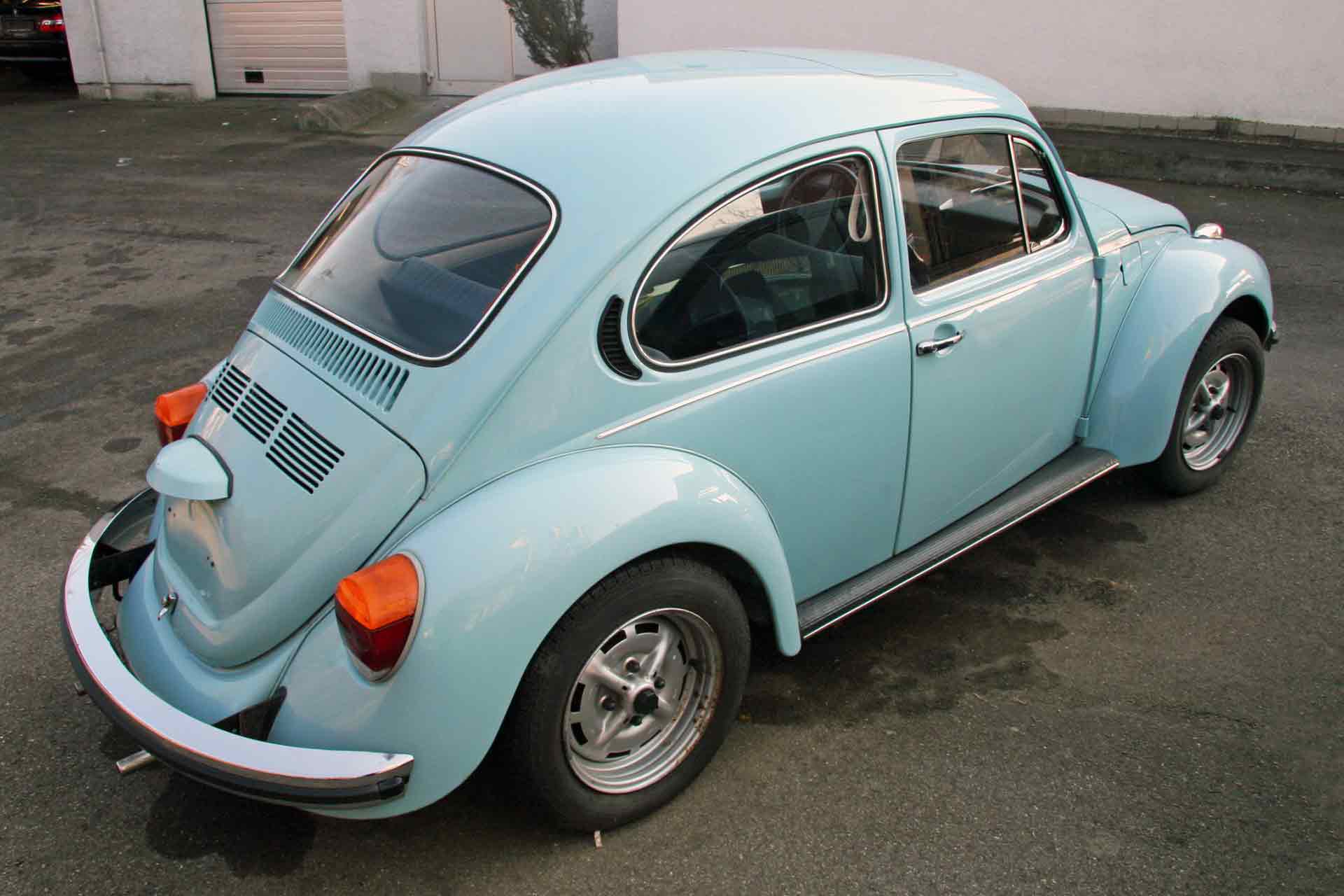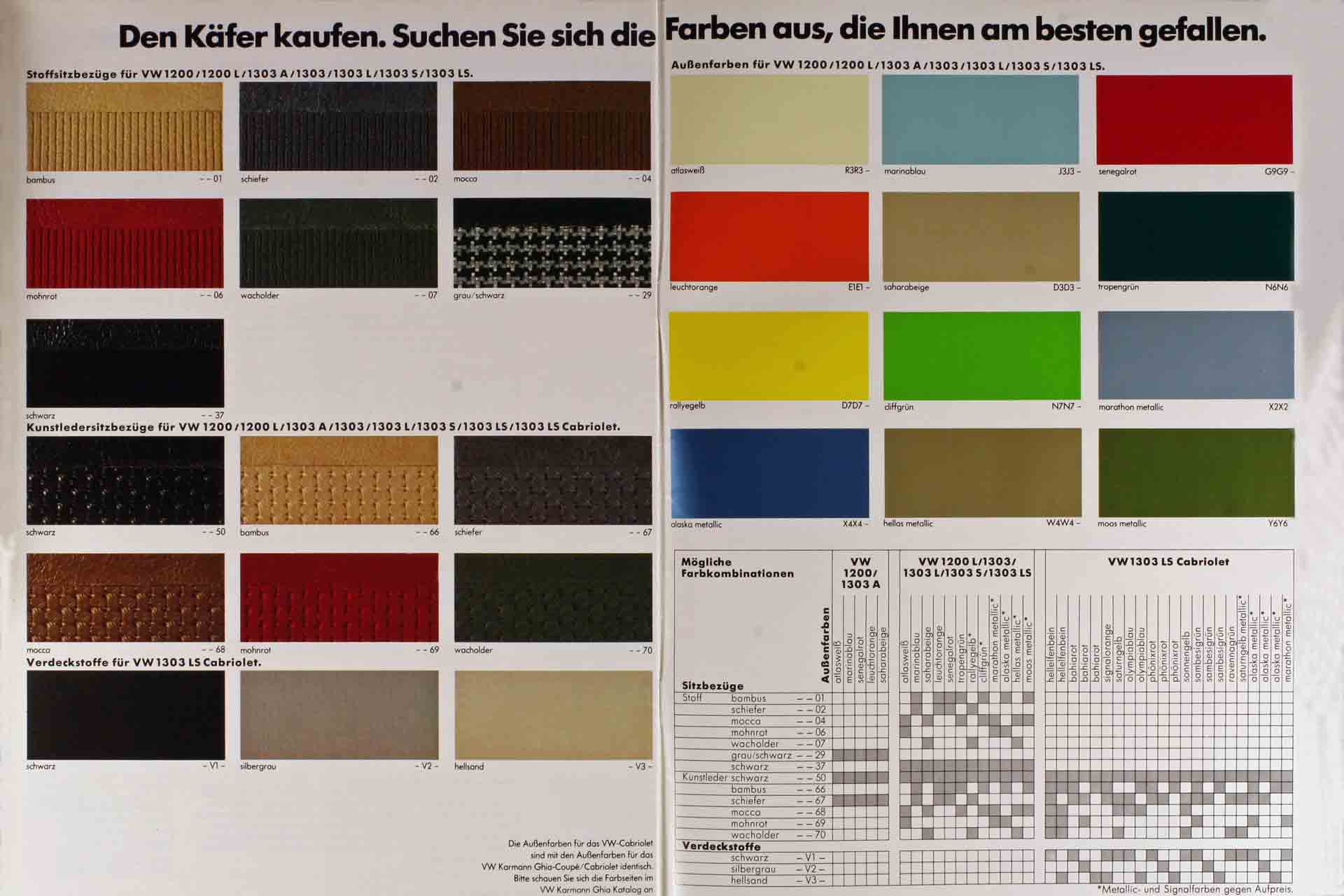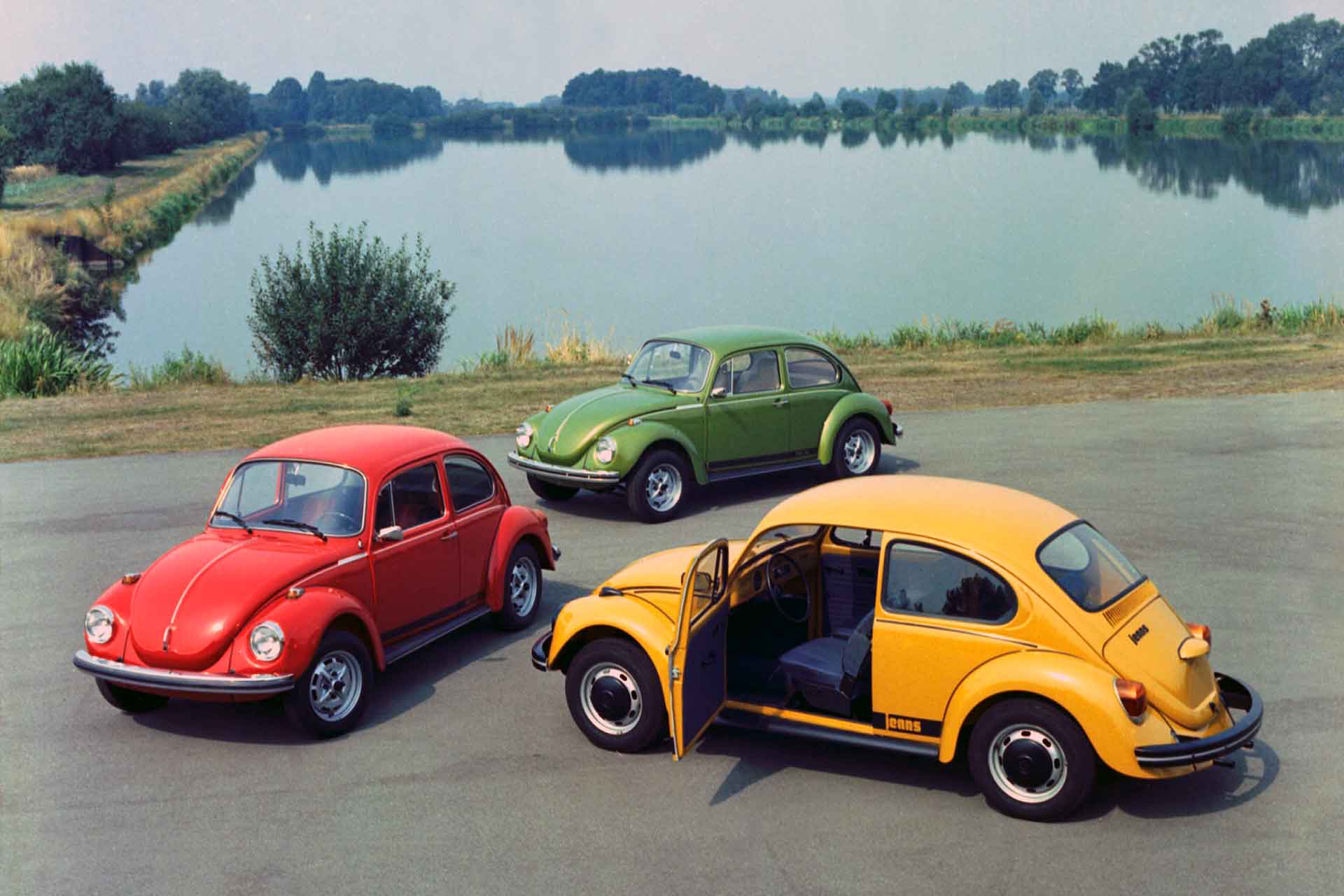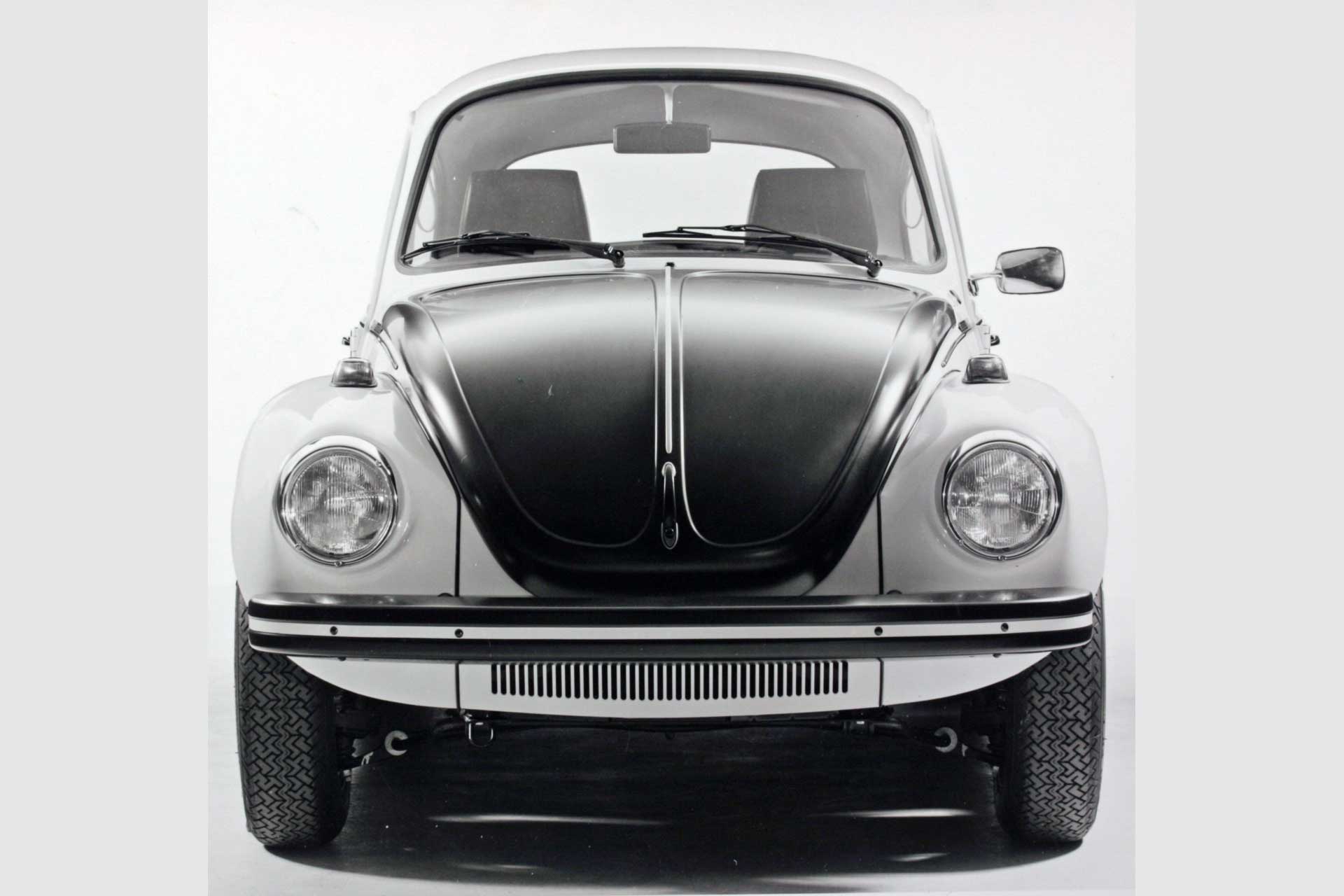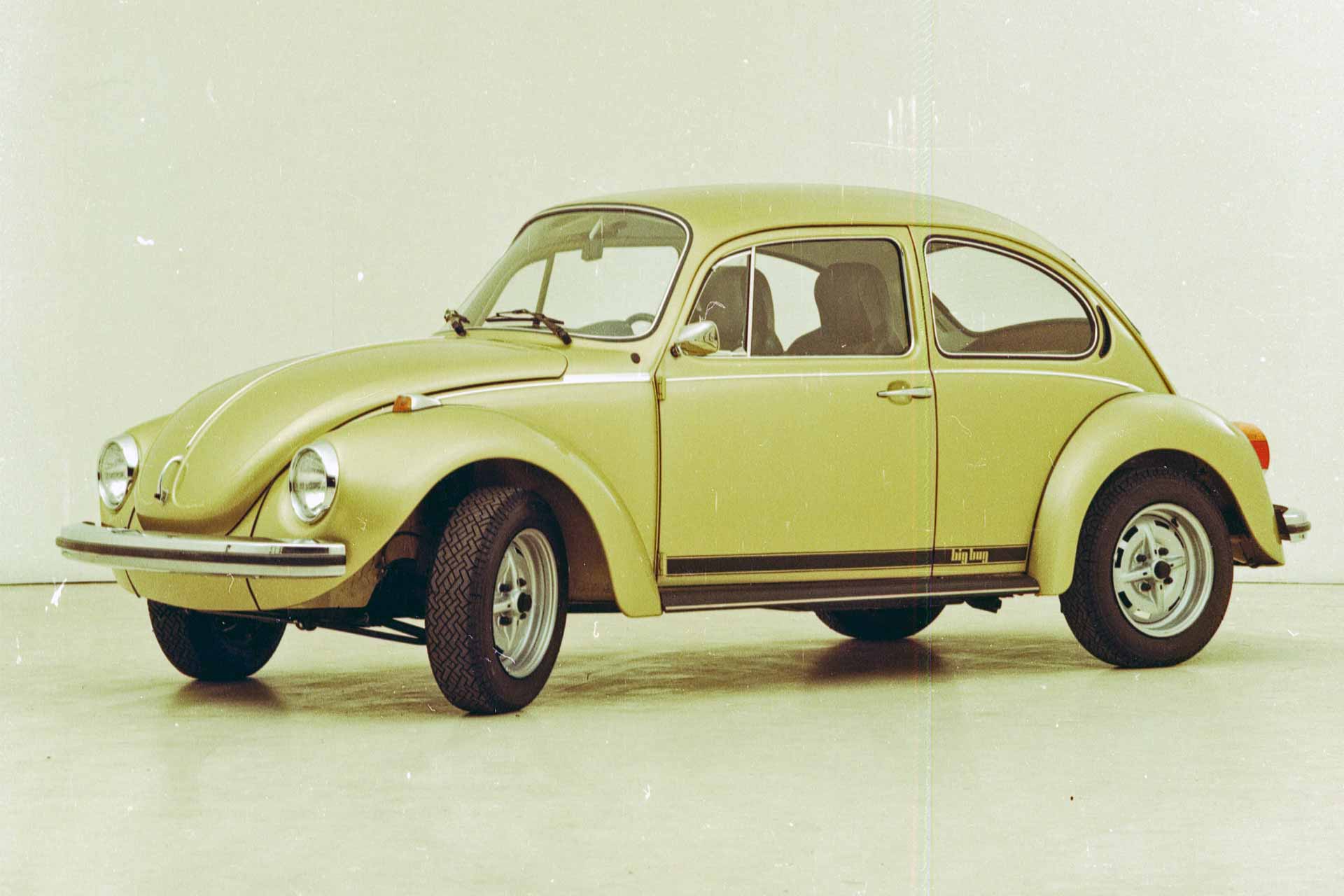The Elephant-Foot Beetle
It is technically the best Beetle of all time, and for many in the know, the most beautiful. The VW 1303 from the 1970s stands out in Beetle history in every respect, especially for its panoramic windshield and Porsche chassis. Now it is part of Herpa history too.
The VW 1302 was always intended to see the light of day, but the VW 1303 developed from it less so. In fact, the VW 1303 is a bit of a joke in automotive history. It was created because a US law was on its way that was supposed to regulate the minimum distance between the driver's head and the windshield. This was too small in the VW 1302, and the USA was VW's main export market. So, Volkswagen draftsmen redesigned the 1302, which was a mere two years old, giving it a large panoramic windshield and a new dashboard, and went one better with the enlarged rear lights and "elephant feet". The Beetle was ready for a bright future in the USA, but the corresponding law never came to be. VW could have spared itself the effort. Nevertheless, the modifications did it so much good, especially visually. The Super Beetles, as the 1302 and 1303 were called, finally did without an excessively long front end, which was not good for its profile. The curved windshield and the visually shortened front end gave it a well-balanced appearance. From 1972 to 1975, the VW 1303 was available as a saloon and cabriolet, but then only as a cabriolet until January 1980. There was no more room for the saloon in the VW range. It had been replaced by the new, modern Golf with front-wheel drive, transverse front engine, and large tailgate. The cabriolet became a niche item (because there was still no open Golf), and the Beetle line was returned to the original 1200s.
The “Super Beetle” as highlight of the monoculture
The Beetle, a 1930s design, moulted its way to perfection over many generations. But it was no longer up to date, even though it was the only thing Wolfsburg could really rely on. Nothing that came from Wolfsburg until the end of the 1960s was modern enough in terms of design, and market leadership had been ceded to Opel. The policy of Beetle monoculture had taken its bitter revenge. The Beetle should have been replaced long ago. But it was spruced up and given a last, but very effective, Viagra-like, second spring. In August 1970, the Beetle becomes the Super Beetle, the 1302.
Fond reception of the best Beetle of all time
Wolfsburg designed the 1302 to meet the US requirements for occupant protection in the event of a frontal collision. The Beetle had never changed so drastically since its birth in 1938. From the windshield onwards, the entire front section was new and 7.5 cm longer than before, while the wheelbase increased by 2 cm. This resulted in considerable chassis modifications: instead of the previous frame head, a transverse head was installed, and instead of the ball pin front axle, a MacPherson front axle with wishbones and suspension struts. These were attached to the body at the bottom with ball joints on the wishbones and at the top with rubber-metal bearings in strut domes. This meant that a Beetle chassis could no longer stand on its wheels when the bodywork was removed, but buckled at the front. This also meant that the body had become a structural component of the chassis. The front track was 6.3 cm wider, the steering angle greater, and thus the turning circle smaller. The MacPherson front axle was accompanied by a new steering system: still worm-roller steering, but with a three-piece column and tie rod for accident protection. The rear swing axle had given way to the double-jointed axle fitted to the automatic Beetle since August 1969. This was commonly referred to as the "Porsche chassis", and in fact hardly any other car of this size had such elaborate suspension at the time. The front axle design and the extended body resulted in a completely new trunk layout. The spare wheel was no longer upright at the front, but lay in a lowered trough. In the event of a frontal collision, it thus even served as a deformation element and, together with the safer steering column, complied with US regulations.
The VW 1302 received two new engine variants, not new designs, but further developments: improved intake system, double intake port on the cylinder head, improved cooling, higher compression, oil cooler moved to the front with its own cooling air flow, and an additional thermostat in the oil bath air filter. This increased the output of the 1300 by ten percent from 40 to 44 hp. The 1600's output increase thanks to an additional 100 cm³, to 50 hp compared to 44 hp in the VW 1500. While the 44 hp version was optionally equipped with front disc brakes, the 50 hp Beetle had this safety feature as standard.
Completely new, and an unprecedented advance for the Beetle, was the forced ventilation, recognizable from the outside by the kidney grille in the C-pillar. It enabled draught-free ventilation of the still tight Beetle interior. Above the dashboard there were now two additional ventilation slots (so-called "Mann air vents"). Together with the electric fan, misted-up windscreens were largely a thing of the past, complemented by a heated rear window (both optional extras). The new Beetles were enthusiastically received by the public and sold extremely well. In 1971, more Beetles were sold than ever before in a single model year, 1,291,612 to be precise. The "old" Beetle, the 1200 with a short front end and previous-generation technology, was still in the range, but now marketed as the "economy Beetle".
The VW 1302 combined the previous "outhouse" with the 7.5 cm longer front end, which looked less than harmonious, at least from a profile perspective. Photo: Florian Sauer [1] In contrast, the VW 1303 in profile: The panoramic window extended the roof pavilion to the front, meaning the hood was shorter. The proportions were now right. Photo: Volkswagen archive [2]
VW 1303:
The Beetle with a feeling of spaciousness
After just two years producing the 1302, the Beetle driver's perception was revolutionized: a large panoramic windshield and a real dashboard, just like in a real car. Modernity had dawned because of a US law that was never passed. The development efforts were huge, the costs immense. The roof was given a new shape, as were the front hood, the bulkhead, and the side panels - the work of Herbert Schäfer, head of styling at VW at the time. "Professor Porsche wouldn't recognize it," the VW advertising department confidently wrote and hired the then extremely popular Dutch show host Rudi Carrell for television commercials. Nobody at the company would have dreamt that the 1302 would be redesigned after just two years. Indeed, these costs were never amortized. Although exports to the USA continued apace, VW sold more 1303s there than in Europe (figures for 1974: 115,177 VW 1303s in the USA, 56,612 in Europe). But the company earnt less on the individual vehicle. The sales price in the USA had to be drastically increased, and the VW 1303 lost its nimbus of being an inexpensive consumer car. It still had the "Made in Germany" advantage, but for 2,300 dollars, an American motorist could get a far more modern, Japanese compact car. In 1974/75, VW was only able to record a fraction of the previous year's sales in the USA. So, in the end, the best Beetle never became the best-selling Beetle - its status having begun to crumble seriously. Until around 1970, the VW Beetle was simply the VW Beetle and ultimately had no rivals. It was not even considered a small car, even though its dimensions were small, its interior was small, its trunk was small, and its power output compared to engine capacity even smaller. No, the Beetle was the Beetle and as such peerless. But in the 1970s, the Beetle's glamor no longer shone so brightly. Suddenly, there were very clever small cars with front engines and front-wheel drive, fully-fledged vehicles in which the interior dimensions made the most of exterior dimensions, which had efficient engines, and were perfectly suited for small families. The 1302, and even more so the 1303, came out when the Beetle had already lost its raison d’être, and mutated into a means of transportation for traditionalists. Anyone who bought a VW 1303 in 1972 did so consciously, as a statement, and although the Beetle was a new car, it was simultaneously a collector's item. This was in part due to the release of the Golf. Dealers pushed it onto the market and managed to change the minds of potential Beetle buyers. On July 31, 1975, the last VW 1303 for Europe rolled off the production line (production for US export continuing until October), 916,713 VW 1303 sedans being produced. In terms of the Beetle, the plant once again concentrated on the original range with front ball pin and rear swing axle as well as a short front end; while the 1303 Cabriolet continued to be built at the Karmann plant.
The Beetle, including the 1302 and 1303, had indicators instead of turn signals from 1960 onwards. They changed shape and size several times, but not their position on the front fenders until the 1975 model, when they moved to the bumpers. The picture shows a 1303 from 1973 [1]. Big things: At first glance, the new three-segment rear lights of the 1303 were round, at second glance slightly oval, and in accordance with US regulations they also shone to the side. The vernacular quickly came up with a nickname that has stuck to this day: Elephant-Foot. Both photos: Volkswagen archive
Every Beetle matters.
But the 1303 matters most
Today, a Beetle is a collector's car. Every Beetle. But Beetle fans prefer the best Beetle, the 1303 (apart from the very old examples, which are now quite rare). Including a VW 1303 as a miniature in the program therefore seems a smart decision by Herpa. The decision was made in favor of the first version, still with indicators on the front fenders (production period August 1971 to July 1974), after which they were moved to the bumpers. Initially, the two 1303 color variants had Lemmerz sports steel rims, an option on the original, always paired with 175/70 SR 15 tires. Herpa is starting with two colors, pastel white and diamond silver metallic. To be honest, the silver was a purely convertible color from 1974, not available for the hard-top 1303. But who says miniature cars have to keep to the original color options? Many a VW 1303 will have been repainted in silver in the course of its life.
Lemmerz steel sport rims always work well. This Beetle 1303 LS is a very fine example, Miami blue on the outside, also blue on the inside, more luxury than a sports Beetle. And yet: these rims always look great! Photo: afs
Kaleidoscope of options
The VW 1303 was available in various special editions, all equipped with the Lemmerz sports steel rims, and has been rendered by Herpa as follows: Yellow-and-black racer from 1973 in Saturn Yellow with matt black hoods, Big Beetle from 1973 in Hellas Metallic (a beige tone), Ontario Metallic (medium blue) and Moss Metallic (dark green), City Beetle from 1973 in Ibiza Red, Ischia Metallic (green), and Ontario Metallic. In addition to these popular special models, there are other special models, including foreign special models from the respective importers.
And then there are all the standard colors: The Beetle range was colorful in the 1970s. For the 1973 model, the saloon color palette consisted of the following shades: Kazan Red, Pastel White, Fluorescent Orange, Texas Yellow, Sumatra Green, Kansas Beige, Marina Blue, Biscay Blue, Maya Metallic, Alaska Metallic, Turquoise Metallic, and Marathon Metallic. For the 1973 saloon: Atlas White, Marina Blue, Senegal Red, Fluorescent Orange, Sahara Beige, Tropical Green, Rally Yellow, Cliff Green, Marathon Metallic, Alaskan Metallic, Light Metallic, and Moss Metallic. The 1975 model year was not really of interest for prototype reasons, as the 1303 had its indicators in the bumpers. Even so, Herpa has a huge number of options with which to light a veritable firework display of colors for the VW 1303.
[1] Play of colors: The Beetle color palette from August 1973, at the beginning of 1303 production, and exactly matching the Herpa-1303. repro: afs
[2] Three special models from 1973: The ochre-colored Jeans Beetle is based on the previous model with a short front end, i.e. the 1200. Red the 1303 City with 40 hp, green the 1303 Big with 50 hp. Photo: Volkswagen archive
[3] The yellow-and-black racer: The ventilation slits in the front panel definitely make an impression and look like an additional oil cooler. On the USA model, they serve to ventilate the air conditioning system. On the GSR, they simply look mighty, because behind them there is ... nothing! Photo: Volkswagen archive
[4] Mister Big brand new: 1303 Big in Hellas Metallic. This was undoubtedly a prestigious vehicle. To date, the 1303 Big was the most luxurious Beetle to come out of Wolfsburg. And besides certain special models for the US market, it will remain so for all time. Photo: Volkswagen archive
Text and titelphoto: Alexander Franc Storz
Facts & figures
Production: August 1971 to July 1975 (for US export until October)
Design: Erwin Komenda (Beetle in general) / Herbert Schäfer (1302 / 1303)
Production volume: 916,713 units in Wolfsburg and from 1974 in Emden
Engines: 1.3 liter with 44 hp and 1.6 liter with 50 hp
Prices VW 1303 (44 hp) / 1303 S (50 hp):
from August 1972: 6,690 / DM 6,890
from March 1973: DM 6,910 / DM 7,140
from August 1973: DM 6,990 / DM 7,220
from March 1974: DM 7,480 / DM 7,725
from August 1974: DM 7,995 / DM 8,260
from January 1975: DM 8,355 / DM 8,630
from April 1975: DM 8,770 / DM 9,060

